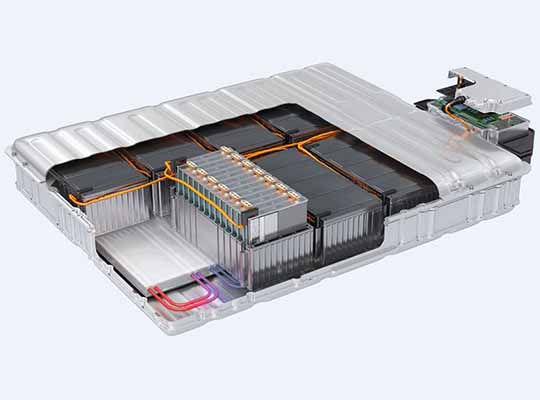Thermal Interface Material (TIM) plays an important role in power electronics, computing processors, sensors, and energy storage devices. TIMs are the materials used to fill the void between heat sources and heat sinks to enhance heat transfer. TIMs come in a variety of forms, including gap pads, thermal greases, thermally conductive adhesives, and phase change materials. The form varies significantly across target application areas, cost, and ease of mass deployment. With the ever-increasing power demand and heat generation for many emerging industries, such as data centers, 5G, and advanced driver-assistance systems (ADAS), TIMs are experiencing rapid growth and evolution, leading to significant market opportunities and massive potential for each of the target industries.
Electric Vehicles (EVs) are a fast-growing market; IDTechEx forecasts that electric vehicle markets across land, sea, and air will generate US$2.6 trillion by 2042 with a double-digit annual growth rate. The battery is undoubtedly one of the most important components of an EV. Together with the fast adoption of EVs, there is also a trend for higher power density, larger battery capacity, and faster charging.

The most used TIM forms in the EV battery industry include gap pads, gap fillers, and thermally conductive adhesives (TCAs). There is no “one-size-fits-all” solution when it comes to TIM form, and the choice is ultimately subject to battery design configuration. Gap filler is by far the most widely adopted TIM for EV batteries at this stage, thanks to their superior ability to be efficiently dispensed at high volumes. However, in order to increase energy density and achieve a longer range, EV batteries have been shifting from modular to cell-to-pack designs. This shift is expected to have profound impacts on the adoption of TIMs. Modular battery designs consist of multiple individual battery modules connected to form a battery pack. Each module has a separate casing and requires a separate TIM to transfer heat from the cell to the cooling system. In contrast, the cell-to-pack design combines the battery cells into a single, large battery module, eliminating the need for separate module housings and TIMs.

This battery transition reduces TIM usage per vehicle as there are fewer thermal interfaces between the cells and the cooling plate. The elimination of module housings means cells can directly contact the cooling plate, thereby changing the performance requirements of the TIM. The TIM needs to transfer heat efficiently to avoid hotspots, as well as present good material compatibility with the cold plate. As the TIMs are positioned directly between the cells and the cold plate, an increased adhesion of TIMs is needed to stick the cells and cold plates together. Therefore, IDTechEx forecasts thermally conductive adhesives to be increasingly adopted thanks to this battery design transition, and by 2020, the market size of TCA within the EV industry is expected to have a 15-fold increase. More details about the opportunities associated with this transition are included in IDTechEx’s latest research, “Thermal Interface Materials: Technologies, Markets, and Forecasts 2023-2033”.













